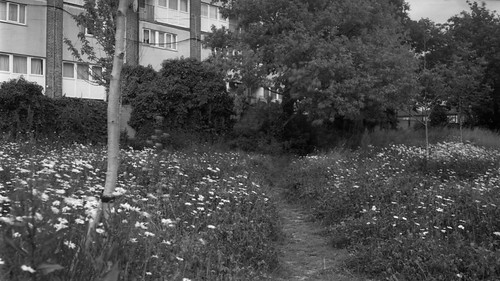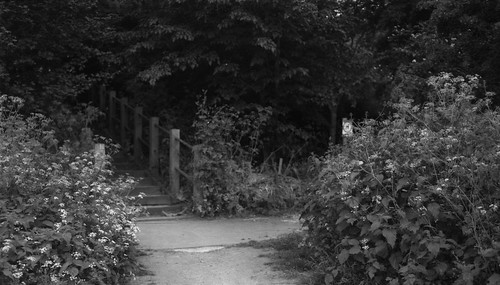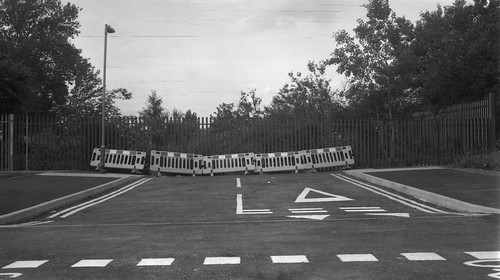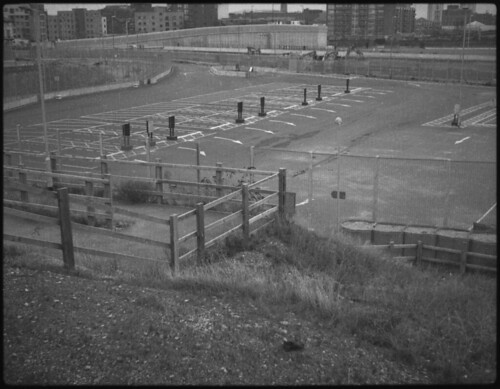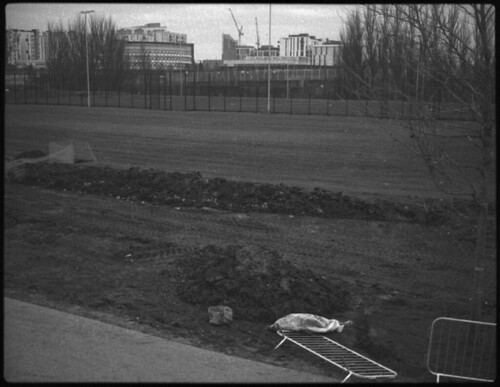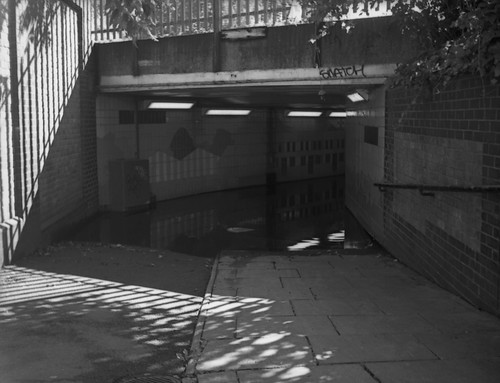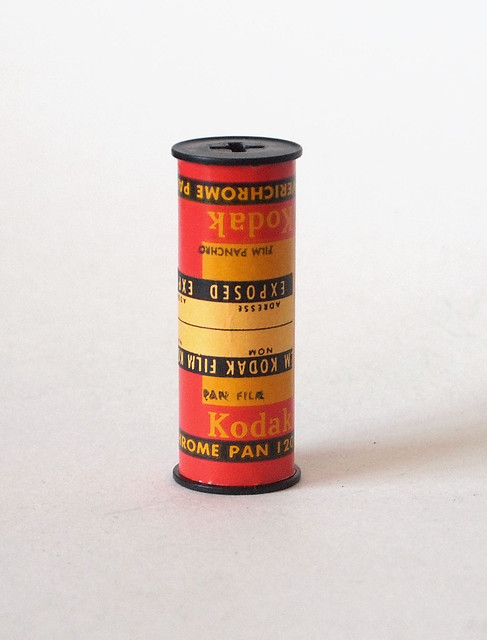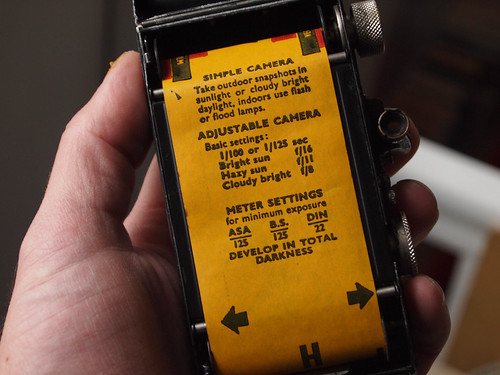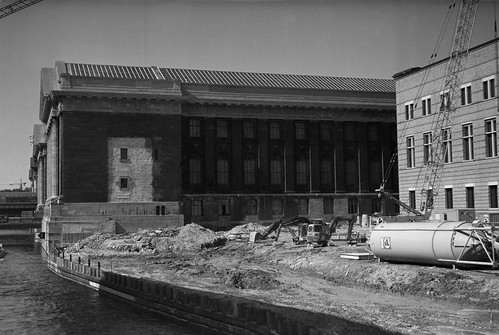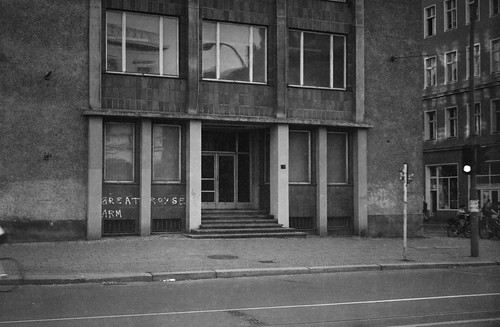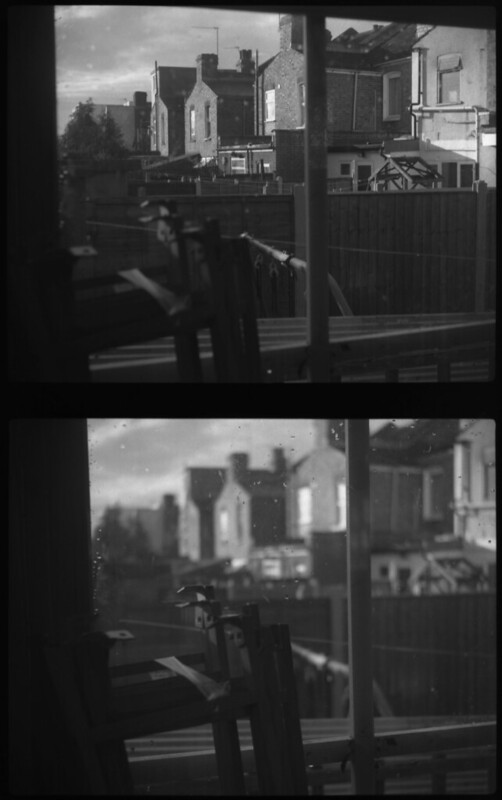 |
| Studio window, Baby Ikonta with Ilford Selochrome |
One aspect of taking photographs on certain annual recurring days, such as the '127 Days', is that repetition can become an archive when photographing the same scenes as time (and the seasons) passes, such as the shot of Dagenham Brook below, which I had shot in July; in December last year, I took a walk along the same route I'd taken the year before. For yesterday's
127 Day I had one roll of
Ilford Selochrome with a develop before date of January 1970 which I hadn't shot on this year's
127 Day in July. I also shot two rolls of
Kodak Verichrome Pan in 828 format with a develop before date of August 1974 which I'd rolled with 127 backing paper, and similarly, a roll of 35mm
Rollei ATO 2.1 Supergraphic. All films were shot with my
Zeiss Ikon Ikonta 520/18 - otherwise known as the 'Baby Ikonta'. I shot half the roll of Selochrome around the house, which allowed me to make a couple of diptychs
shooting through windows, and, although the skies briefly cleared, by the time I went out to take some more photographs, it was a typically grey December afternoon (the weather being one reason I tend not to shoot on 27th January, the other
1/27 in the calendar when written in the form used commonly in the US).
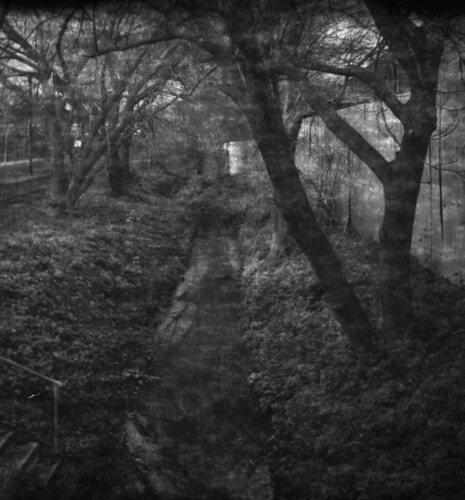 |
| Dagenham Brook, Kodak Verichrome Pan |
Both rolls of Verichrome Pan exhibited very pronounced texturing from the backing paper. The Ilford Selochrome also showed a trace of this effect, but having retained more sensitivity, with a denser negative this was much less apparent and only really showed up in shots which were underexposed. The lighting conditions weren't sympathetic to shooting the Verichrome Pan film with a slower rating than 50 EI which may have helped. The film also had a very strong curl which caused problems with film flatness: it seems this was enough to force back the camera's pressure plate in a number of shots.
 |
| Kodak Verichrome Pan, showing a lack of film flatness |
The poor lighting conditions were less than ideal for using Rollei ATO 2.1, which has a nominal rating of 25 ISO, but performs better at lower exposure indexes, and, unlike
July this year, I did not have a tripod with me for longer exposures (most of the shots illustrating this post were at fairly wide apertures and at shutter speeds of either 1/50th or 1/25th). The image below was the best shot from the roll of ATO; I attempted some shots at 1/10th, but the Baby Ikonta's shutter was beginning to stick at that speed.
 |
| Leyton Sign, Rollei ATO 2.1 |
All films were
stand developed in Ilfotec LC29 for one hour, at 1:100, except for the ATO 2.1, for which I used a dilution of 1:200. As I was developing the first couple of rolls of film, the clouds began to break up again in time for the sun to set and I shot the second roll of Verichrome Pan.
 |
| Winter Afternoon, Kodak Verichrome Pan |
 |
| Sunset, Kodak Verichrome Pan |


